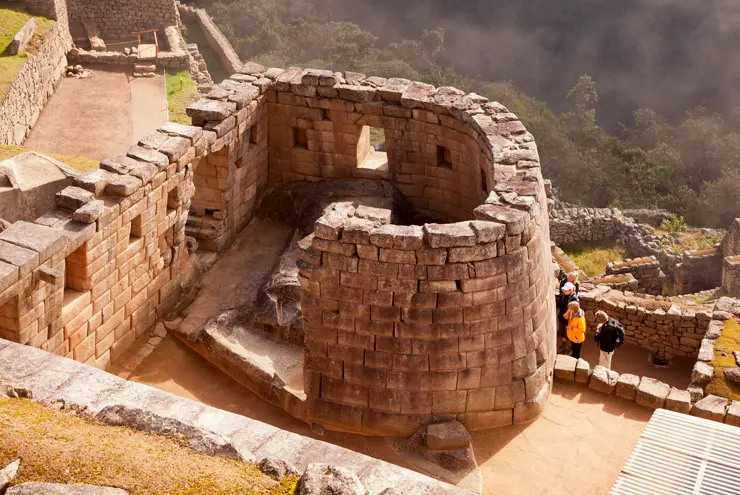Here’s what we know.
Machu Picchu was built in 90 years, between the years 1450 and 1540. It’s located on a crest of the Peruvian Andes by people that knew neither metal tools or the wheel.
The buildings were given walls of drastically different sizes, each made up of stones that had been stacked with impeccable accuracy. Despite not having any mortar to hold them together, there has been no significant erosion or any other change.

It’s just one example of the Inca’s specialty when it came to construction: ashlar, or dry stone masonry. This construction method allowed the Incan buildings to survive the frequent earthquakes that would rock the region. The masonry might sway and move, but it wouldn’t topple, always settling back into place.

The Dancing Stones
It’s this flexibility of the stones in Incan architecture that is so captivating. The masonry of Machu Picchu have come to be known as dancing stones.
The lack of mortar has allowed the stones to move in the rhythm of the earth’s motion, instead of breaking due to being rigid. This is probably why so much of Machu Picchu is intact and still with us today.
A tour of Machu Picchu reveals a whole series of design details that couldn’t be an accident. Gently rounded corners instead of sharp edges. A slight tilt of the corners towards the center. L-cuts in the stones to connect each other to the corners of the walls. The walls do not rise in a straight line, but are slightly displaced from one row to another. All small details that have ensured the life of Machu Picchu for centuries.

No Metal Tools, No Wheels
The only thing more jaw-dropping than the way the city is put together is the fact that it was done without metal tools or wheels. There are zero indications as to the presence of wheels in Inca society. They used round shapes in art, but not in construction. A vein of granite crosses the land and there are semi-finished pieces found in the quarry. Here there are some hints of how the stone was processed, something done mostly with impact from smaller stones.
But as for transportation of the finished blocks to the site, that is anyone’s guess. There may have been two techniques that could be combined. Possibly, the stone was placed on several logs and wrapped in thick ropes and dragged with pure physical labor on the rotating logs.
With the rainy, soggy soil, there could have been a slippery surface for the Incas to drag the stones on. In either case, the key factor would have been the brute strength of physically fit men.
Once onsite, the stones could have been placed with beams and wedge stones. Then they could either be removed or sanded away when the stones were fit together precisely.

The Water and Sewage System
Here’s the problem with water for an ancient city. You need to ensure that there will be a constant supply, and you also need to make sure that torrential rains will not overwhelm the water delivery system.
The Inca’s careful calculations resulted in an intricate hydraulic channel system. The width and depth of and course of the channels could not have been better in order to capture the performance of the water source. Everything from the distance of the channels to the angle of inclination correspond exactly to the sum of running water and the possibility of accumulating rainwater.
There is evidence that the Incas highly regarded water as sacred, and the channel system testifies to this.
